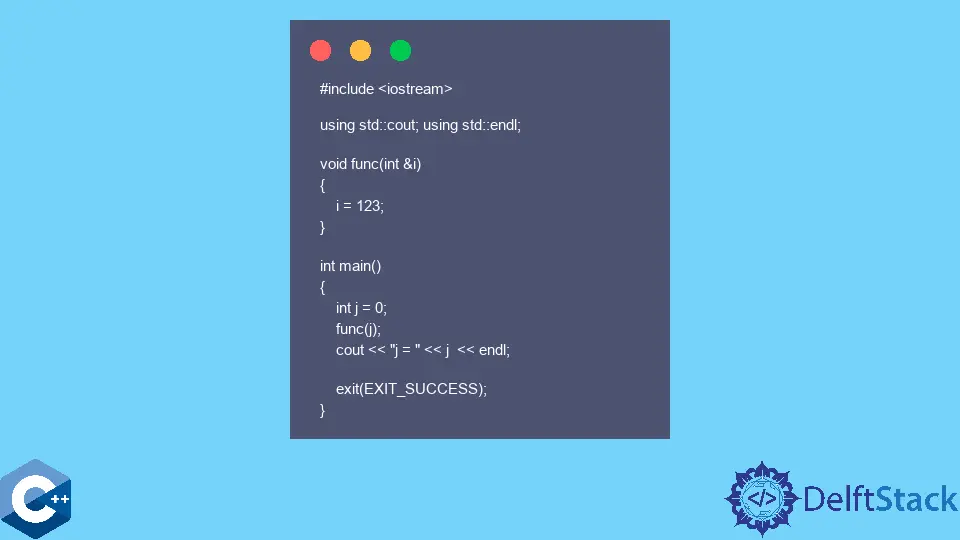在 C++ 中按引用调用与按值调用的比较

本文将解释几种在 C++ 中如何通过引用进行调用与通过值进行调用的方法。
在 C++ 中使用&符号通过引用来调用函数
函数参数是函数定义的核心部分,因为它们是用于初始化函数参数的值。当参数是引用时,它将绑定到参数,并且参数的值不会被复制。相应的行为称为通过引用传递,或者该函数通过引用调用。请注意,此方法在需要在函数之间传递相对较大的对象时更常用,因为它节省了复制过程占用的额外资源。
在函数内部对对象执行的操作将修改变量的原始存储位置,这类似于将指针传递给对象的方法。在下面的示例中,我们演示了 func 函数,该函数带有单个 int 类型参数并分配了 123 值。i 符号只是 main 程序中原始 j 对象的别名。请注意,&符号在 C++ 中是重载的,不应与操作符地址功能混淆。
#include <iostream>
using std::cout;
using std::endl;
void func(int &i) { i = 123; }
int main() {
int j = 0;
func(j);
cout << "j = " << j << endl;
exit(EXIT_SUCCESS);
}
输出:
j = 123
使用纯函数定义在 C++ 中按值调用函数
当给定函数确实复制参数并将其作为单独的对象存储在相应范围中时,通常会说通过值调用该函数是为了表现该行为。相应的符号不需要任何不同的符号,但是将参数指定为纯变量。因此,功能块的作用域有一个单独的对象,对其的修改不会影响 main 函数的原始变量。当传递的参数是内置类型或易于在函数之间复制的小对象时,最常见的做法是采用按值调用方法。
#include <iostream>
using std::cout;
using std::endl;
void func2(int i) { i = 123; }
void func(int &i) { i = 123; }
void func(int *ip) {
*ip = 123;
ip = nullptr;
}
int main() {
int j = 0;
func(j);
cout << "j = " << j << endl;
j = 0;
func2(j);
cout << "j = " << j << endl;
j = 0;
func(&j);
cout << "j = " << j << endl;
exit(EXIT_SUCCESS);
}
输出:
j = 123
j = 0
j = 123
Founder of DelftStack.com. Jinku has worked in the robotics and automotive industries for over 8 years. He sharpened his coding skills when he needed to do the automatic testing, data collection from remote servers and report creation from the endurance test. He is from an electrical/electronics engineering background but has expanded his interest to embedded electronics, embedded programming and front-/back-end programming.
LinkedIn